The annual Big 3 East (B3E) media show near Daytona in Central Florida has been around since 2007. Drawing over 50 vendor brands and around 100 journalists at its most populous, B3E has settled into a more compact format with around 15 exhibitors and about 50 gun writers. The main draw is the extensive hands-on time with production and prototype gear: Most of the show is set up at the three gun ranges of the hosting facility, at 25 yards, 100 yards and 800 yards. Writers, photographers, videographers and other members of the media are invited on the basis of professional reputation, mainly by referrals from current members. The show always begins on Wednesday and ends on Friday, giving the participants nearly three days to explore all the options. Engineers attend alongside marketing professionals to provide technical details and to take in user feedback. The show floor is an air-conditioned hangar located in the middle of the property between the three ranges. Even late March can be quite hot in Daytona!
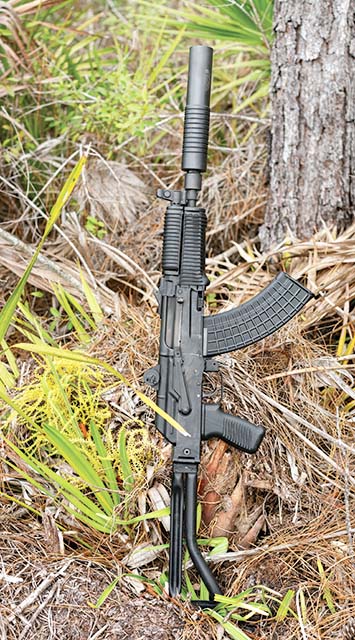

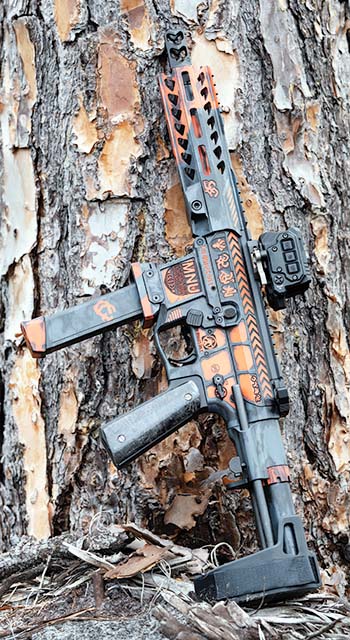
Getting Hands-On
As in the years past, getting hands-on experience with guns seen only in pictures was an eye-opener. Some very plain designs proved impressive performers, and some one-off prototypes were on the firing line, too. There’s no amount of reading and looking at other people’s videos that can give this level of understanding. A prime example is shooting sound suppressed rifles: some, like Spike’s Tactical ST-15, proved very comfortable; some others exhibited gas blowback typical of the platform. Another “bigger than life” experience was with the AR-10-based Spike’s short-barreled quiet rifle chambered for .308Win cases cut down to straight wall. With only a barrel change, this Spike’s .416 cartridge offered impressive performance—much further than you would expect, thanks to the high bullet coefficient (BC). With a BC of 0.530 being excellent for 175-grain .308 match bullets, the .416 projectile has a BC of 0.886! That translates into much slower velocity decay, along with good accuracy thanks to no supersonic to subsonic transition at any point of the flight.
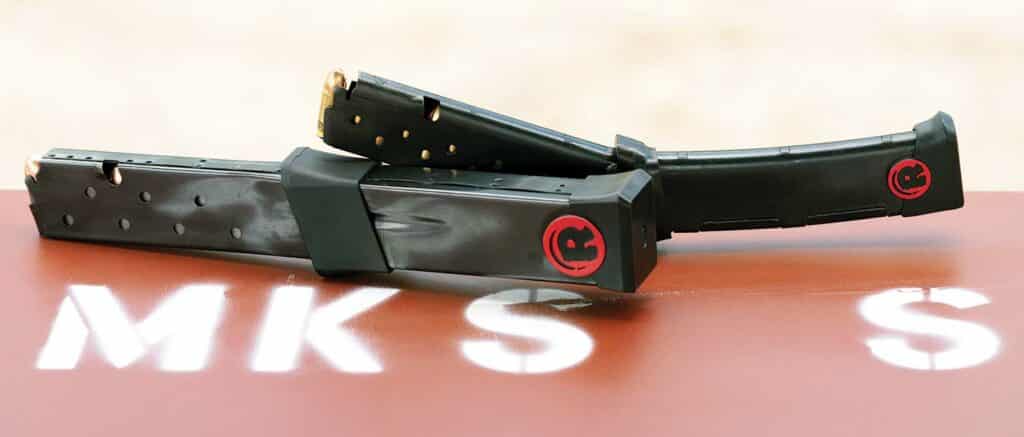
High BC monolithic Leheigh Defense brass 408-grain .416 slugs loaded over fast pistol powder came out of the 11.5-inch barrel at 1090fps with minimal flash, which was further reduced by the Bowers Group sound suppressor. The result is a very accurate system with next to no launch signature, negligible recoil and very high penetration. No gas blowback and almost no receiver fouling were observed; although, as long as a standard AR-10 with the voluminous suppressor is attached, this weapon was far better balanced and better suited for handheld use. Lighter-weight supersonic bullets, like Cut-ting Edge Bullets’ 180-grain fragmenting RAPTOR, reach 2350fps from the 16-inch carbine variant.
The proof was in the shooting: I was consistently able to hit even the smallest of the steel targets at 100 yards, the head-sized “hostage takers,” at a quick rate. From the bench, the prototypes wrung out sub-MOA results. Had it not been for the cost of the hand-made ammunition with high-performance bullets, I would not have moved from that lane for the rest of the show.
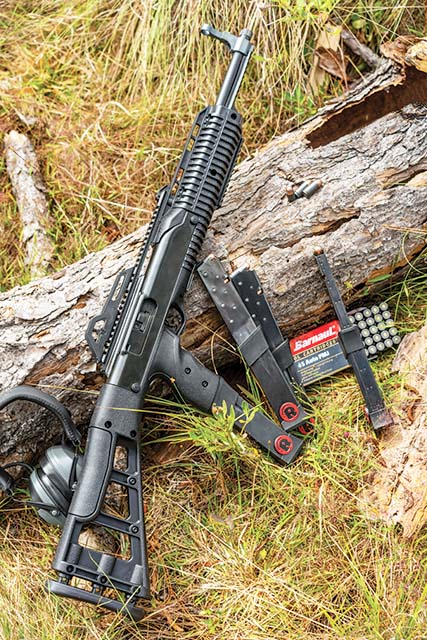

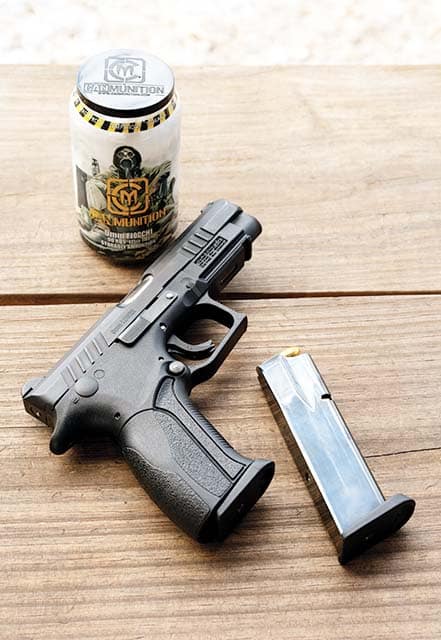
Side-by-Side Comparisons
Another perk is the ability to do side-by-side comparisons between similar guns. Recently released Grand Power Stribog A1, now imported by Global Ordnance with a non-re-ciprocating charging handle, and Palmetto State Armory’s AK-V 9mm compete for the same market niche. Walther MPK-like Stribog and Vityaz-like AK-V 9mm are both blowback braced pistols, both with vestigial iron sights and an optic rail. Both proved well-balanced and accurate, 4MOA or better; neither had much recoil. Both had sensible user interfaces. AK-V 9mm open sights were better lined up with the shooter’s eye, while the Stribog aperture sight offered a longer radius. Being non-adjustable, Stribog sights are meant as backups to optics. With optics, the ergonomics favored the Stribog slightly. Both pistols were absolutely reliable in high-volume use. Stri-bog showed slightly greater refinement: the EVO3-compatible magazine used in the AK-V 9mm was difficult to insert due to a projection in the magwell; although, in theory, that projection would disappear in the production version of the gun. Overall, both guns checked out as fun and functional.
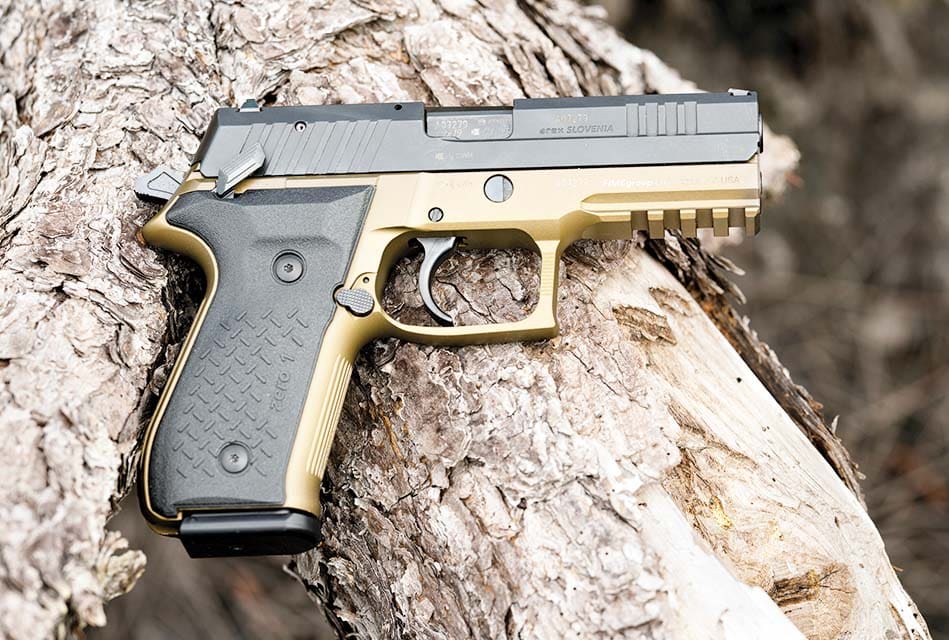
And, speaking of fun, Blackout Custom exhibited guns as art—highly customized, extensively decorated firearms with engraving and multi-tone cerakoting that reference movies and comic books, showing off unusual camouflage patterns and loud, can’t-miss-me colors. The creations remain completely functional, with the added enjoyment of having a unique gun in hand. They brought everything from pistols to shotguns to long-range rifles, many of which had to be handled directly to appreciate the materials and the textures. Think of it as getting an industrial art museum tour with the opportunity to use the exhibit pieces.
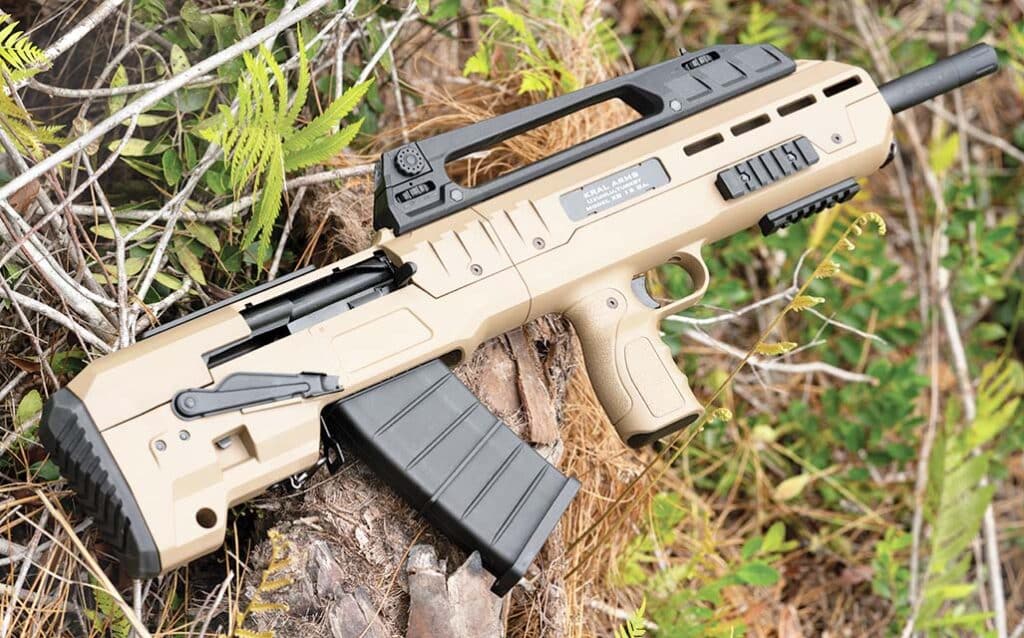
Sometimes, the featured product isn’t the main draw of an exhibitor. FIME Group had their new Slovenian REX Delta on display; it is a functional striker-fired, 15-shot 9mm polymer design. But the REX Alpha, what looked like a SIG SAUER 226 clone at first glance, turned out to be an original design performing extremely well in both tactical and competition variants. Although I usually favor longer, heavier pistols for the reduced recoil and increased sight radius, the alloy-framed Alpha tactical model proved so comfortable and accurate in use, anything bigger just felt unnecessary. It’s these kinds of discoveries that draw me to Big 3 East; ergonomics and fit are personal, so buying firearms without test firing is like mail ordering shoes—it can turn into a lame experience. Trying firearms can be equally enlightening. Until this range trip, I had no idea that REX Alpha was a perfect fit for my hand. Similarly, the relatively modest muzzle blast of the extra compact Maxim Defense PDX gave me a much greater appreciation for it than I expected. The Kral XB 12-gauge bullpup was a good ergonomic fit, but hopes of low recoil were dashed by compatibility only with full-power ammunition. When it comes to triggers, be they the superb Geissele Automatics or the crunchy, heavy pre-production examples from some others, there’s nothing like hands-on experience!
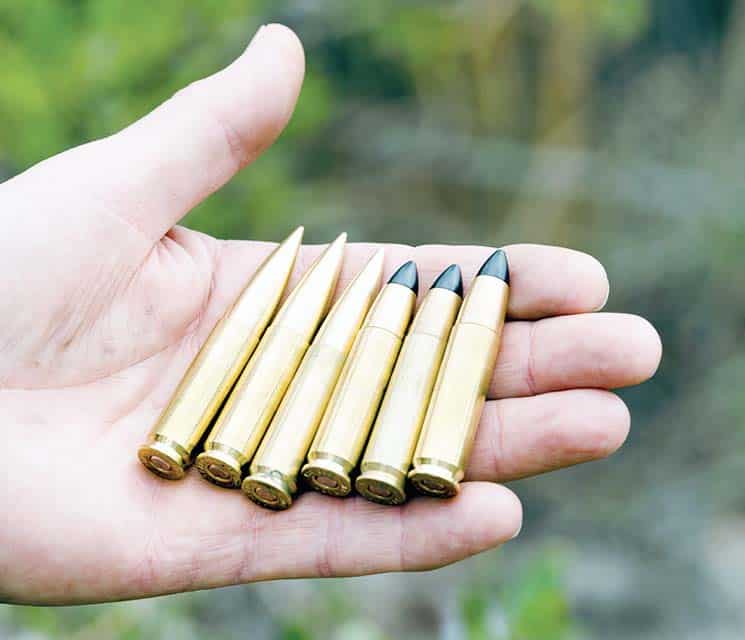
Stand-Out Accessories
Some of the stars of the show were not the guns but the accessories. The update of Hi-Point Firearms’ 9mm and 45ACP car-bines with threaded muzzles is a relatively minor change, while the availability of reliable 20-round REDBALL Sports magazines’ instant-doubling capacity may be critical to current owners or buyers considering the purchase. Similarly, CanMunitions™ long-term storage containers in the form factor of soft drink cans isn’t an earth-shattering development, but a well-implemented convenience. It’s also nice to see the gun culture lighten up and take itself slightly less seriously. A My-Little-Pony-themed Kydex holster would have been unthinkable at a trade show even a decade ago but is taken in with good humor today. A truly manly man can wear what he likes, without regard for naysayers!
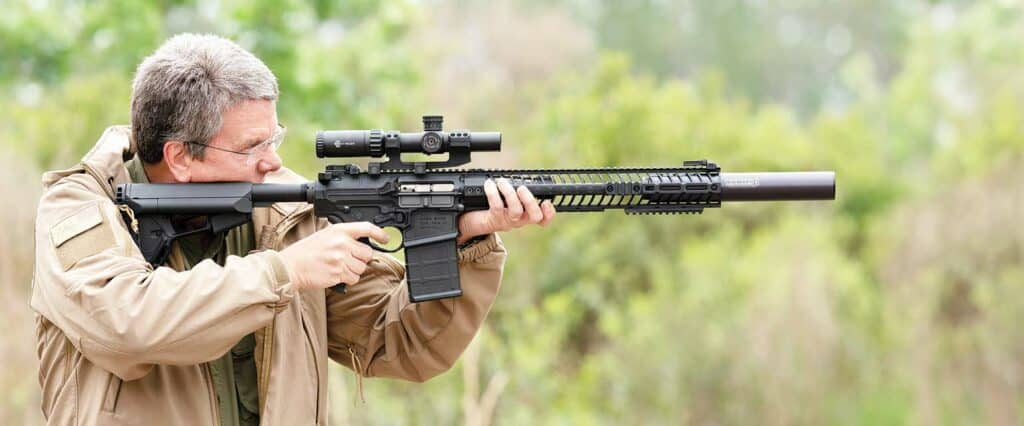
What May Come
It helps that the media is represented by people who know this field well. Frank Mel-loni, the founder of Renaissance Firearms Instruction and a writer for NRA publications, is a good example. Frank understands the details of both technology and its uses, so his inquiry into something like a precision rifle in a new caliber can be detailed and critical. The same holds true for the rest of the invited journalists. They are either former military, gunsmiths, hunters or competitors, each with a different approach to the guns and ammunition features at B3E. CJ, Ancel and the rest of Big 3 East training center crew put a good show together, with a far-reaching echo of images, videos and articles propagating from it.
| This article first appeared in Small Arms Review V23N8 (Oct 2019) |












